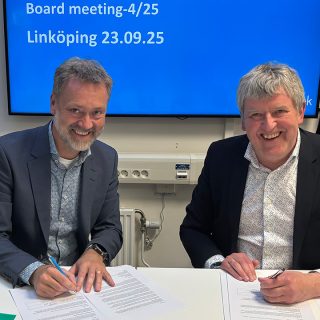The Wallenberg AI, Autonomous Systems and Software Program (WASP) is Sweden’s largest research initiative, launched in 2015 with a budget of 6.5 billion SEK from the Knut and Alice Wallenberg Foundation. It aims to position Sweden as a global leader in AI, autonomous systems, and software. The program runs until 2031 and involves five core universities—Chalmers, Linköping, Lund, KTH, and Umeå—plus affiliated groups at Örebro, Uppsala, and Luleå.
A key goal is to expand Sweden’s research capacity by recruiting 80 international faculty members. By April 2025, 75 researchers had joined at assistant, associate, or full professor level. Each recruitment includes a competitive package with two PhD students and two postdocs. The hiring process follows each university’s rules, but funding decisions are made centrally by WASP to ensure strategic alignment and avoid internal competition among Swedish institutions.
A majority of the research in WASP is conducted through PhD student projects spanning the full range of WASP topics. The WASP PhD students are enrolled in the national WASP Graduate School. Until now, more than 740 students have been admitted to the WASP Graduate School whereof 180+ have graduated. The last couple of years, approximately one doctor per week is produced. A pace that will continue for several years to come.
The allocation of funding for projects and PhD-positions within the WASP program is managed through open calls reviewed by WASP-fellows and international experts. This has led to high academic standards in the recruitment processes and transparent allocation of resources, where scientific merit is the guiding principle.
Through specialized courses, joint study trips in Sweden and abroad, and the possibility to engage in academia-industry collaboration, a strong community with unique skills and large professional network is built. By ensuring that PhD students from different fields meet each other, and offering courses that enable both width and breadth, the WASP PhDs are both experts and generalists. The activities in the graduate school are jointly organized by all member universities, hence giving the possibility for each university to contribute within its own area of expertise. As a supervisor and university, you get the benefit of leverage of the strange of the other partner universities, as your PhD students easily get firsthand experience to the knowledge at other universities. Also, the possibility to co-develop courses with peers from other universities has enhances the knowledge development. Furthermore, the PhD students (and their supervisors) get a large network far beyond their home university in a rather short timeframe.
There are three types of PhD students in WASP: academic, industrial, and affiliated. The academic PhD students spend full time at a university, the industrial PhD students are employed at a company and split their time between the company and a university. The affiliated PhD students have funding from sources outside WASP but are enrolled in the WASP Graduate School and have the same opportunities in WASP as their WASP-funded peers. The mechanism to affiliated PhD-students has been a way to cater for PhD-students in the area, not directly funded by WASP and it has served the community well and increased the size of the graduate school. However, there are still PhD-students in surrounding areas (and universities) that are not part of the WASP program that would have liked to take part in the WASP graduate school offerings but are not given the opportunity due to space limitations.
WASP is governed by a board with representatives from the partner universities top management and major Swedish industries. The program is officially hosted by Linköping university, but the executive power is spread through the partner universities by co-directors and shared responsibilities between the universities. Hence, WASP has led to collaboration between the universities, where each partner builds upon their strengths. The program has also led to a consolidation of academia within the area in Sweden and it has fostered good collaboration between the partner universities.
The result so far indicates that the recruited faculties stay within Sweden to a large extend and is capable of attracting addition funding from the national and European funding systems. Of the PhD-students that have graduated so far, about 50% has taken up positions within Swedish industry, and another 25% has stayed in Swedish academia, hence the mission to strengthen Sweden’s competitiveness in the area seems to be fulfilled. We see that this knowledge build up is crucial in order to stay competitive in the modern AI-era. However, to navigate the future funding landscape is a challenge when the WASP program comes to an end.



